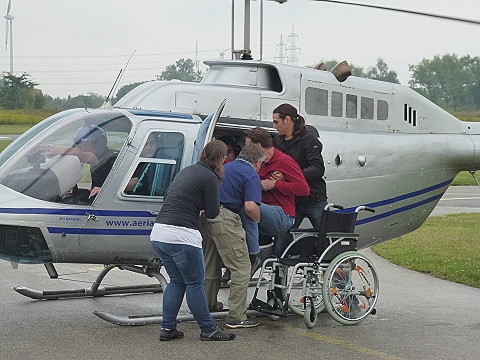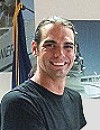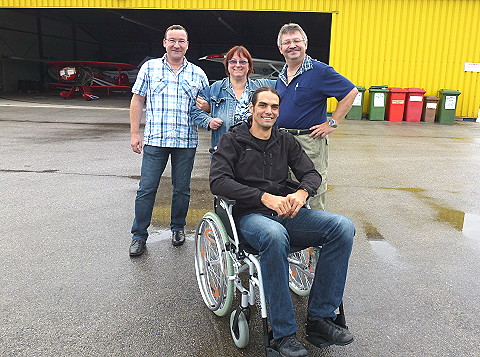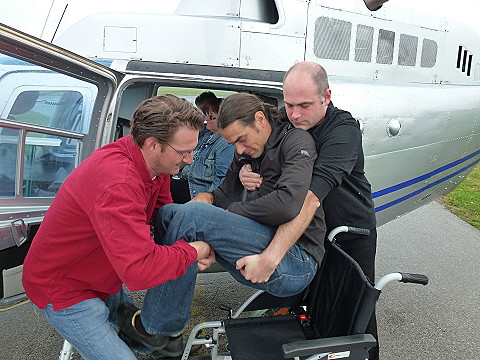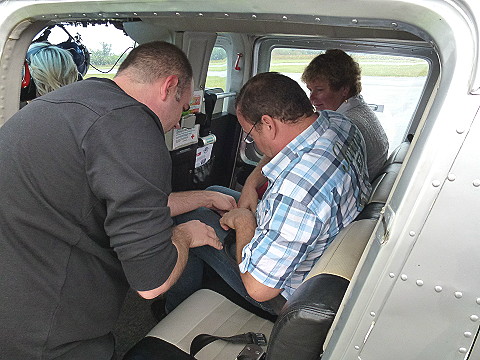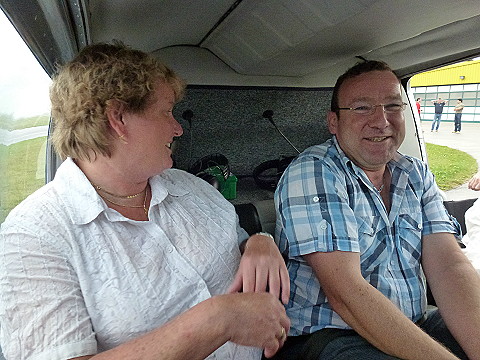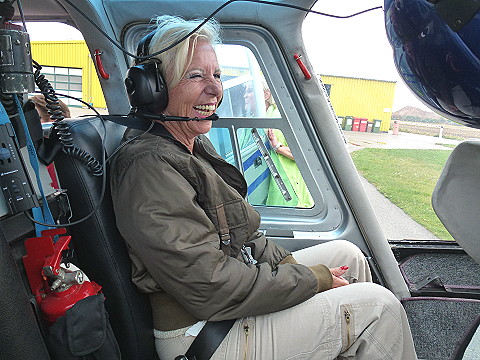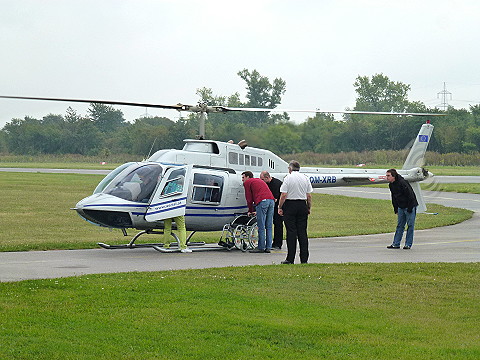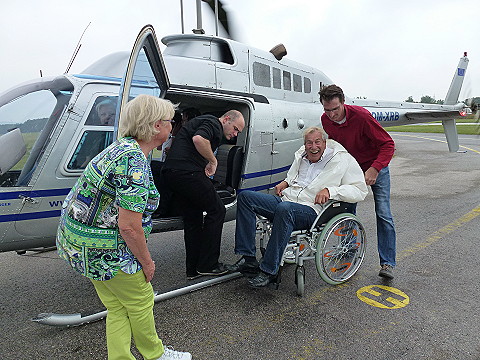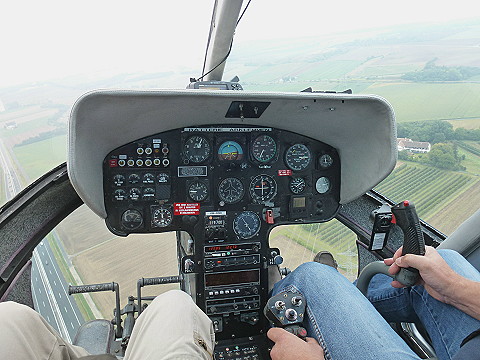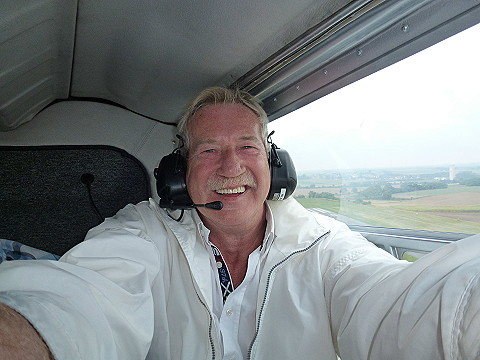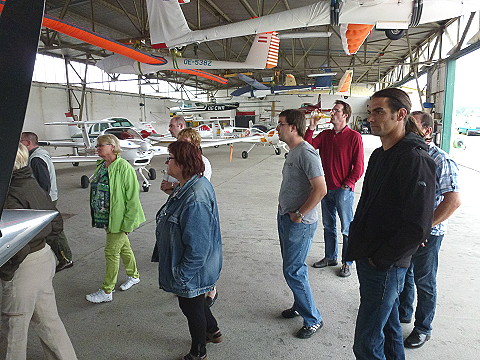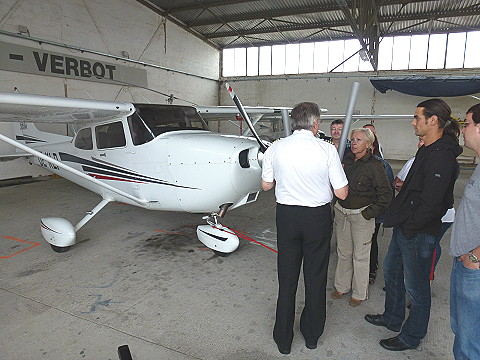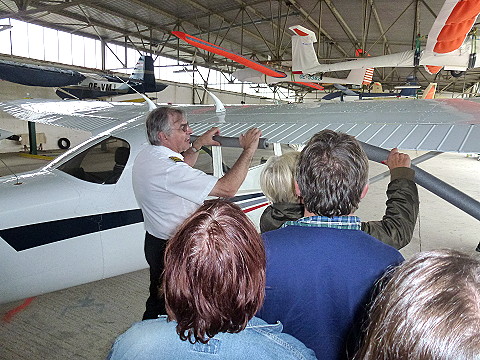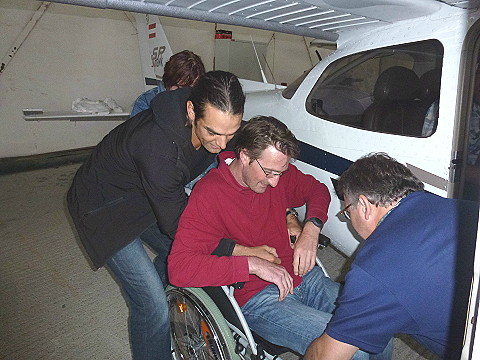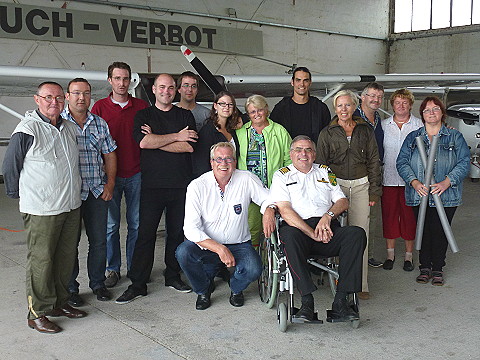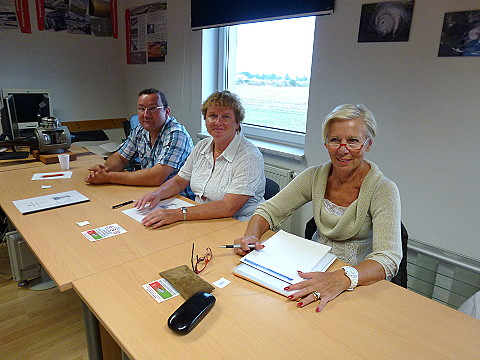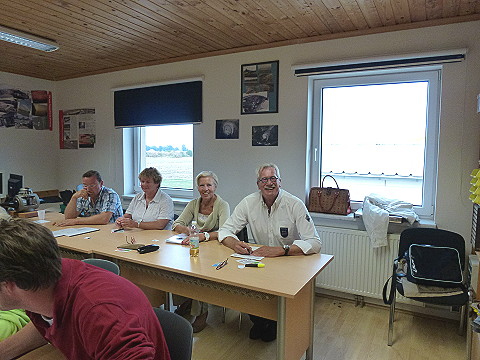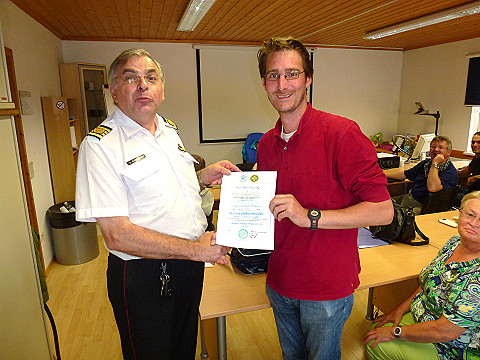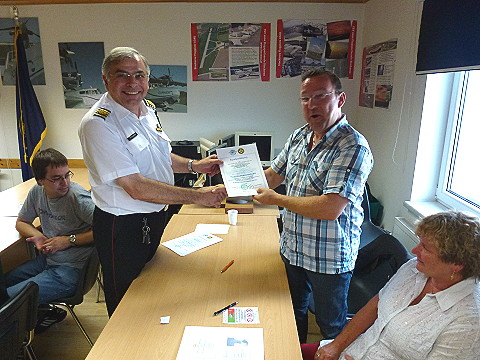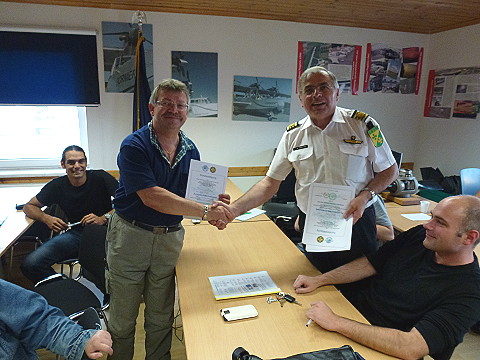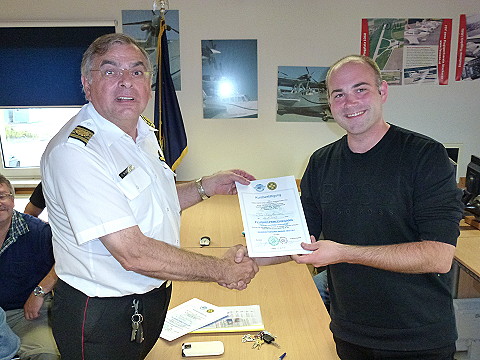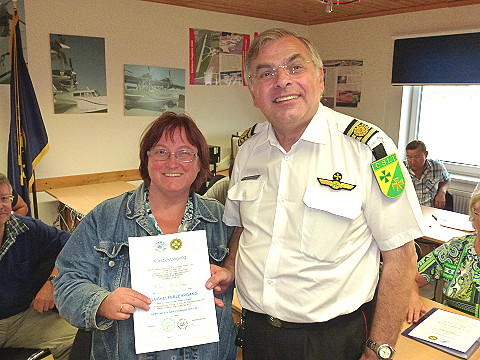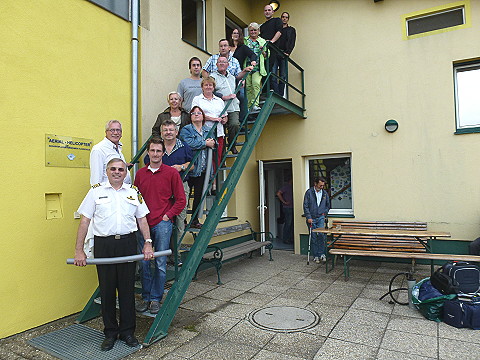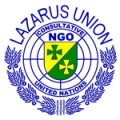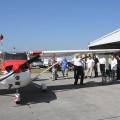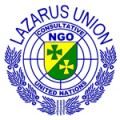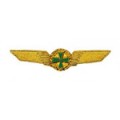Instructor Senator h.c. Wolfgang Steinhardt
On Saturday 24.08.2013 the CSLI Flight Assistants training course was held on the Stockerau airfield in cloudy weather with a light drizzle. It was my first meeting with members of the Lazarus Union and I was therefore curious about what awaited me on the day.
When I arrived, my first impression was of the typical image of a group of people who meet for a training day. A motley conglomeration of people had gathered in the most important room – the canteen. During my first coffee (although you should not actually use the term ‘coffee’ for the brown liquid in these machines) it was quickly apparent that some of the attendees had known each other for some time and others were first timers at the Lazarus Union. Although not personally known to me until then, I could see the head of the Flight Assistants training course (Wolfgang Steinhardt) due to the insignia on his jacket even before he greeted me.
When I arrived, my first impression was of the typical image of a group of people who meet for a training day. A motley conglomeration of people had gathered in the most important room – the canteen. During my first coffee (although you should not actually use the term ‘coffee’ for the brown liquid in these machines) it was quickly apparent that some of the attendees had known each other for some time and others were first timers at the Lazarus Union. Although not personally known to me until then, I could see the head of the Flight Assistants training course (Wolfgang Steinhardt) due to the insignia on his jacket even before he greeted me.
When all 14 participants were present, it was off to the training room for the first time where Wolfgang welcomed us officially and opened the course. He described what successful completion of the course would mean, which we then all personally imagined. It was very interesting to see how the course was composed of different occupational groups. Virtually everything was represented, from an office administrator and a technical draftsman to a theologian in training as well as a retired sea captain.
After drawing lots to divide into teams and a minute of silence for the recently deceased Vice President of the Union Lazarus Colonel (Retd.) Reinhard Wassertheurer, Wolfgang began with the presentation of the first topics:
– Responsibilities of a Flight Assistant
– Conduct At Airports
– Special Features of CSLI Flight Days
Mainly through numerous personal anecdotes he made the first theoretical part of the training very interesting and informative. Then we went straight to the practical application of what we had heard. In our previously allocated teams we began a first passenger briefing dry run. Here, the team leader briefed the others. The team that was being briefed had been told to make it hard for the briefer and this led to bizarre and sometimes quite funny situations. After these first dry runs we finally went out onto the airfield to practise the entry and exit of passengers on a helicopter.
The light drizzle meant that from now on we could no longer be said to be doing ‘dry runs’! As mentioned at the briefing, one team simulated the passengers while another team was re-briefed and took over handling the entry and exit. The helicopter in which the procedure was practised was an Agusta Bell 206-B Jet Ranger, which will also be used at the Disabled Flight Day. It was primarily about everyone on the team being able to internalise their assigned work to ensure a comfortable, and above all safe, entry and exit of passengers.
The whole thing was practised once with running rotors and once without. As a small compensation for their efforts, each team was also able to enjoy a short scenic helicopter flight.
After lunch we went back into the classroom where Wolfgang inaugurated us in the fundamentals of aviation law and stressed again the important points about conduct at airports. Although everyone was well satisfied from lunch, we kept our eyes open even in aviation law. Kudos to Wolfgang who made this theory exciting and so prevented the possibility of any interruptions by the sound of snoring.
As a final practical part we practised entry and exit on an aeroplane. Here a Cessna C-172 was used in the training. As with the helicopter, we worked in our teams, each accompanying the other team to the aeroplane. Due to the narrowness of the aircraft, the loading and unloading of handicapped people is a particular challenge. Above all, the trailing edge of the wing should be avoided because passengers boarding and alighting can easily injure their heads on it. But in the end there’s nothing that cannot be controlled with some well-intentioned pushing and pulling.
Finally, we again returned to the classroom to complete the Flight Assistant written exam. Thanks to Wolfgang’s excellent preparation, all participants passed.
I would like to sincerely thank Wolfgang for holding the course, the people of Aerial Helicopter for the flying and providing the training equipment, and all my fellow participants for this informative and enjoyable day. Looking forward meeting again on Disability Flight Day!
Manual Gabler, Master of Engineering
Picture impressions:

